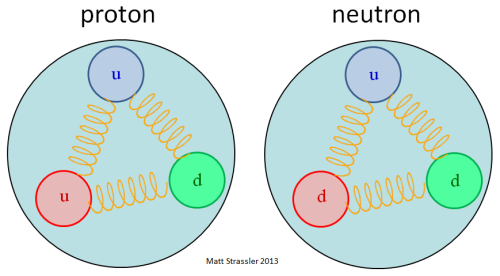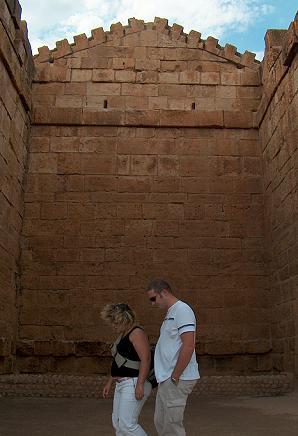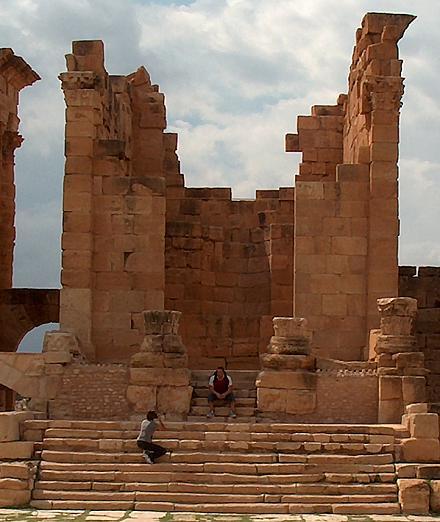bad-andreas-s-blog
27 posts
Latest Posts by bad-andreas-s-blog

What are Quarks?
A quark is a type of elementary particle and a fundamental constituent of matter. Quarks combine to form composite particles called hadrons, the most stable of which are protons and neutrons, the components of atomic nuclei.

There are six types of quarks, known as flavors: up, down, strange, charm, top, and bottom Up and down quarks have the lowest masses of all quarks. The heavier quarks rapidly change into up and down quarks through a process of particle decay: the transformation from a higher mass state to a lower mass state. Because of this, up and down quarks are generally stable and the most common in the universe, whereas strange, charm, bottom, and top quarks can only be produced in high energy collisions (such as those involving cosmic rays and in particle accelerators).

Due to a phenomenon known as color confinement, quarks are never directly observed or found in isolation; they can be found only within hadrons, such as baryons (of which protons and neutrons are examples) and mesons. For this reason, much of what is known about quarks has been drawn from observations of the hadrons themselves.

This movie illustrates the action inside the nucleus of a deuterium atom containing a proton and a neutron, each with three quarks. An electron strikes a quark inside a proton, passing energy to the quark before the electron bounces back. The quark now has so much energy “stuffed” into it, it creates a cascade of new particles as it flies out of the proton. The result is two new, two-quark particles.
Quarks have various intrinsic properties, including electric charge, mass, color charge, and spin. Quarks are the only elementary particles in the Standard Model of particle physics to experience all four fundamental interactions, also known as fundamental forces (electromagnetism, gravitation, strong interaction, and weak interaction), as well as the only known particles whose electric charges are not integer multiples of the elementary charge.

An animation of the interaction inside a neutron. The gluons are represented as circles with the color charge in the center and the anti-color charge on the outside.
Mass

Current quark masses for all six flavors in comparison, as balls of proportional volumes. Proton and electron (red) are shown in bottom left corner for scale.
Two terms are used in referring to a quark’s mass: current quark mass refers to the mass of a quark by itself, while constituent quark massrefers to the current quark mass plus the mass of the gluon particle field surrounding the quark. These masses typically have very different values. Most of a hadron’s mass comes from the gluons that bind the constituent quarks together, rather than from the quarks themselves.
Gluon

A gluon is an elementary particle that acts as the exchange particle (or gauge boson) for the strong force between quarks. It is analogous to the exchange of photons in the electromagnetic force between two charged particles. In layman’s terms, they “glue” quarks together, forming protons and neutrons.
Field lines from color charges

In quantum chromodynamics, a quark’s color can take one of three values or charges, red, green, and blue. An antiquark can take one of three anticolors, called antired, antigreen, and antiblue (represented as cyan, magenta and yellow, respectively). Gluons are mixtures of two colors, such as red and antigreen, which constitutes their color charge. QCD considers eight gluons of the possible nine color–anticolor combinations to be unique.
Spin

In quantum mechanics and particle physics, spin is an intrinsic form of angular momentum carried by elementary particles, composite particles (hadrons), and atomic nuclei.
Spin is one of two types of angular momentum in quantum mechanics, the other being orbital angular momentum. The orbital angular momentum operator is the quantum-mechanical counterpart to the classical angular momentum of orbital revolution: it arises when a particle executes a rotating or twisting trajectory (such as when an electron orbits a nucleus)
Baryons and Mesons

A baryon is a composite subatomic particle made up of three quarks. Baryons and mesons belong to the hadron family of particles, which are the quark-based particles. As quark-based particles, baryons participate in the strong interaction, whereas leptons, which are not quark-based, do not.
In particle physics, mesons are hadronic subatomic particles composed of one quark and one antiquark, bound together by the strong interaction. Because mesons are composed of quark sub-particles, they have a physical size, with a diameter of roughly one femtometer, which is about 2⁄3 the size of a proton or neutron. All mesons are unstable, with the longest-lived lasting for only a few hundredths of a microsecond. Charged mesons decay (sometimes through mediating particles) to form electronsand neutrinos. Uncharged mesons may decay to photons. Both of these decays imply that color is no longer a property of the byproducts.
Source: wikipedia, hyperphysics (To know more click the links: Baryon, Meson, Gluon) Images: x, x, x, x, x

Manti
Aollo11 Saturn V Launch

Buzz Aldrin



Pad Leader Guenter Wendt, kneeling, supervises preparations to remove the Apollo 11 astronauts from their spacecraft following the Countdown Demonstration Test, a dress rehearsal prior to the actual launch day. Visible in the hatchway is Command Module Pilot Michael Collins. To his left is Apollo 11 Commander Neil A. Armstrong. At Collins’ right is Lunar Module Pilot Edwin E. Aldrin Jr

I love this photo.


Today is February 9, 2017, and Donald Trump is not my President.








Capitoline of Sbeitla
Sbeitla, Tunisia
2nd century CE
70 m. X 67 m.
From left to right: Temple of Minerva is in the best condition, while the Temple of Jupiter next to it has almost all of its walls still standing. The Temple of Juno has fared worse, but there is plenty to help you imagine what it must have looked in pristine condition. To the south of the forum is the Arch of Antionius Pius.
The southernmost of the three temples was dedicated to Minerva, which was the daughter of the two gods revered in the other two temples. She was considered to be the virgin goddess of warriors, poetry, medicine, wisdom, commerce, crafts and inventor of music. Her temple appears as the most impressive of the three from the outside, and even the interior is in excellent condition.
The Temple of Jupiter stands in the middle, being the temple of the most important of all gods in the Roman pantheon. It is the largest temple, and deduced from its present, excellent condition, it was the object of first-class engineering. It is noteworthy that the temple has no entrance by itself, it was entered by bridges across arches from either of the other two temples.
The Temple of Juno is by far the least impressive of the three making up the Capitol. It is also the most ruined one. Juno was the Queen of the gods, the wife of Jupiter and the mother of Minerva. The niche in the middle had a statue of the goddess, which has never been found.

America’s future is in the hands of people who couldn’t care less about us.

German Cart Crossing a Stream in the Eastern Front 1942.
via reddit
Weiterlesen
https://www.youtube.com/watch?v=c2DgwPG7mAA&feature=share
https://www.youtube.com/watch?v=FA7AQv8mSeM&feature=share
https://www.youtube.com/watch?v=TAazDWwxIoA&feature=share

A young girl enjoys a cup of tea courtesy of the advancing Allied armies in a sector of Europe now cleared of Hitler’s troops. 1944
via reddit
Donald Trump was supported by white voters across all demographic boundaries. Can we stop coddling some of them? On Jan. 20, Donald Trump will become president of the United States of America. via Pocket

we have the power








Celebrate the facts. Happy Black History Month!
follow @the-movemnt

Britney Spears, tot? Nein, das wäre selbst für das schwarze Jahr 2016 zu viel. Aber falsche Todesmeldungen haben leider immer wieder Konjunktur - von Axl Rose bis Stefan Raab.
Always the death in the eyes

Radna Ayusheev, an ethnic Bashkir sniper of the 63rd Soviet Naval Infantry Brigade, is photographed during the Petsamo–Kirkenes Offensive. The Petsamo–Kirkenes Offensive was a major military offensive mounted by the Soviet Army against the German Wehrmacht in 1944 in northern Finland and Norway. The offensive defeated the Wehrmacht’s forces in the Arctic, driving them back into Norway. Ayusheev is credited with killing 25 German soldiers during the operation but was later killed in action. Kirkenes, Norway. October 1944
humiliation of prisoners of war

German POWs marched through Moscow, 1944
Approximately three million German prisoners of war were captured by the Soviet Union during World War II, most of them during the great advances of the Red Army in the last year of the war. The POWs were employed as forced labor in the Soviet wartime economy and post war reconstruction. By 1950 almost all had been released. In 1956 the last surviving German POW returned home from the USSR. According to Soviet records 381,067 German Wehrmacht POW died in NKVD camps (356,700 German nationals and 24,367 from other nations). German estimates put the actual death toll of German POWs in the USSR at about 1.0 million
https://en.wikipedia.org/wiki/German_prisoners_of_war_in_the_Soviet_Union
The bust is well done by the sculptor
